MP Board Solutions for Class 10 Economics Chapter 1 – Development
MP Board Solutions for Class 10 Economics Chapter 1 – Development are essential for understanding how development is measured and perceived by different individuals and regions, as per the MPBSE curriculum. These well-structured answers help students grasp topics like income vs. non-income goals, average income, and the Human Development Index. Designed according to the latest syllabus, these solutions strengthen conceptual clarity and improve exam preparation. Ideal for revision and practice, they promote critical thinking and socio-economic awareness, making them a valuable study tool for scoring well in Class 10 Social Science exams.
MP Board Solutions For Class 10 Economics – Development – Exercise Images
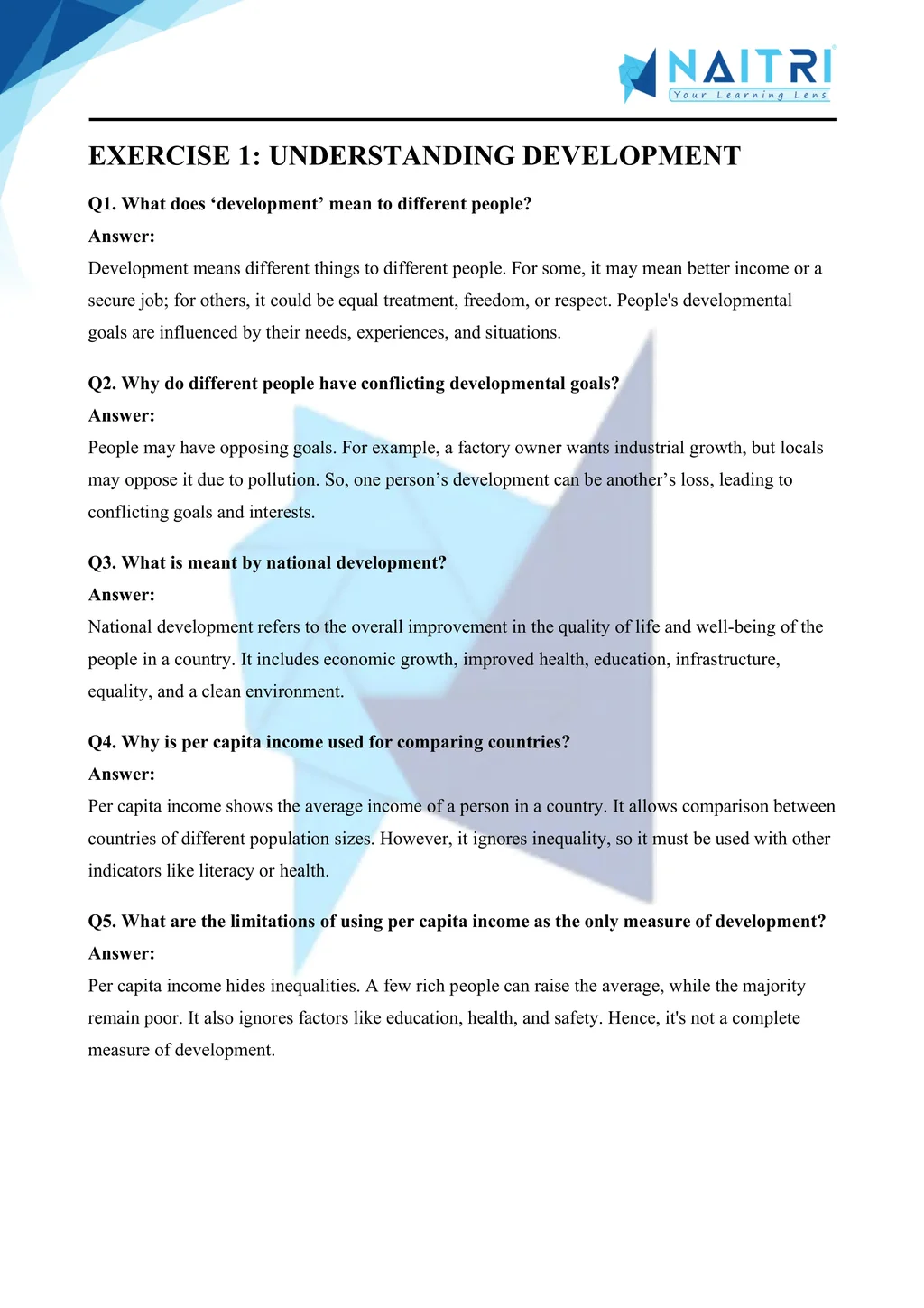
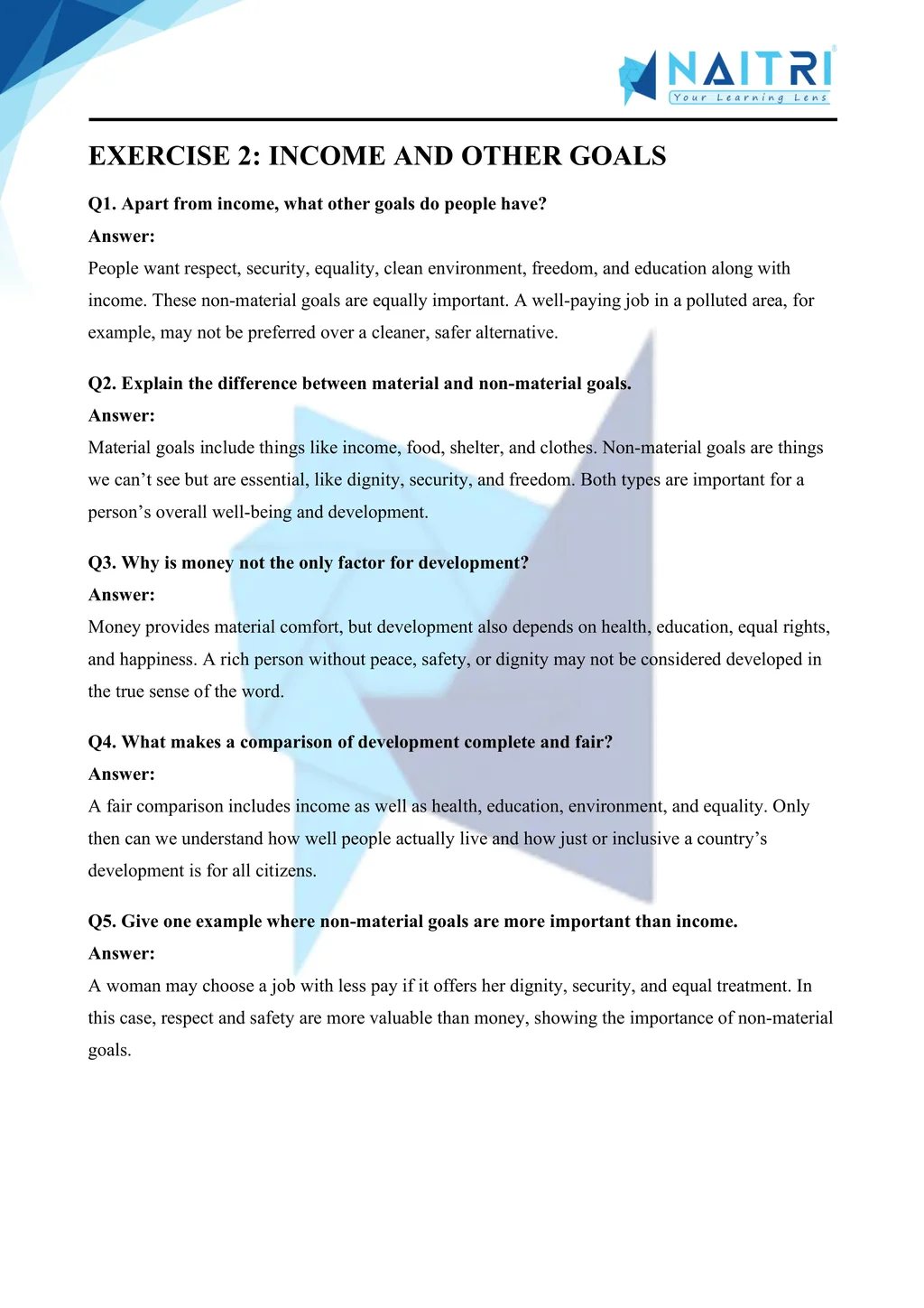
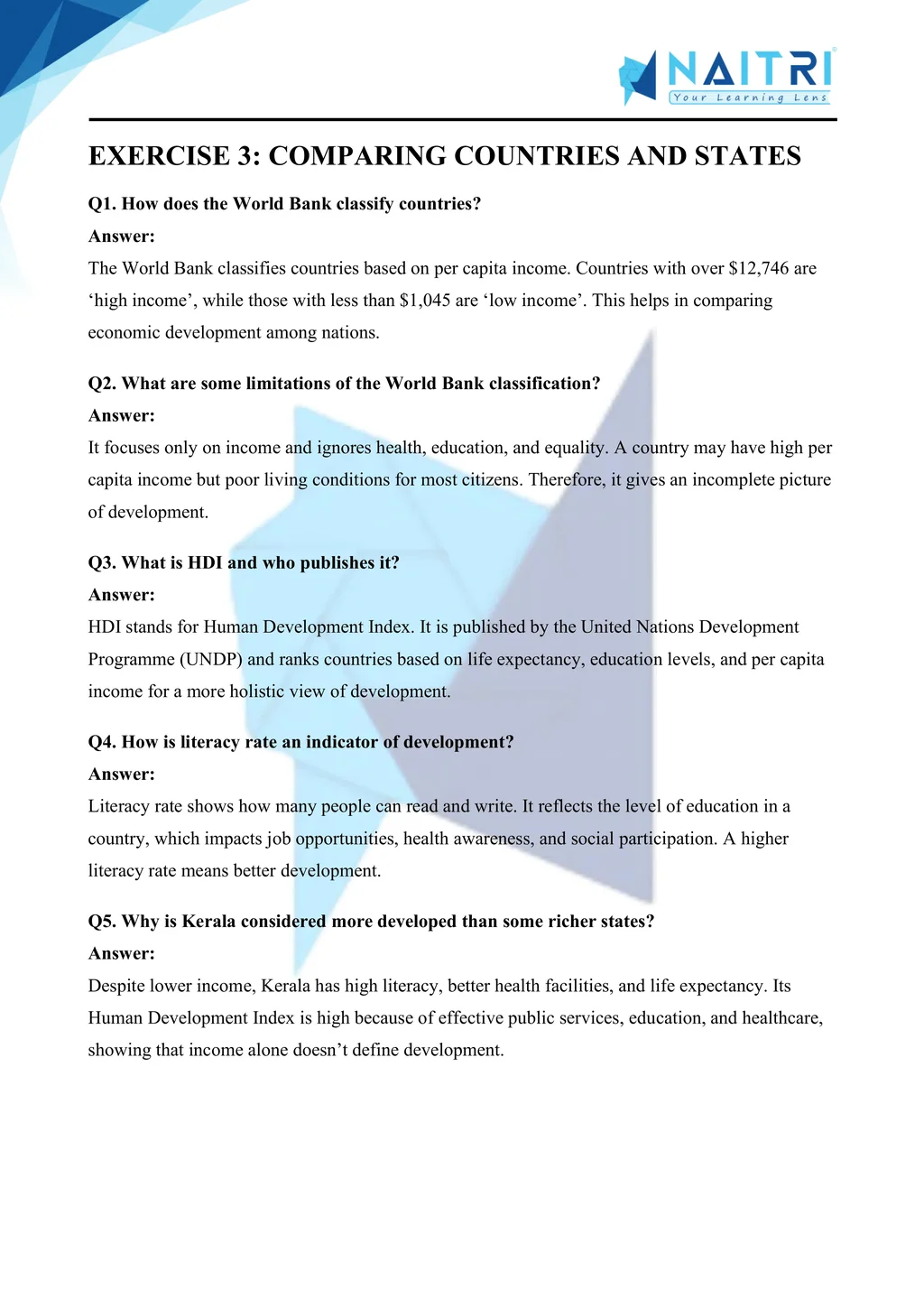
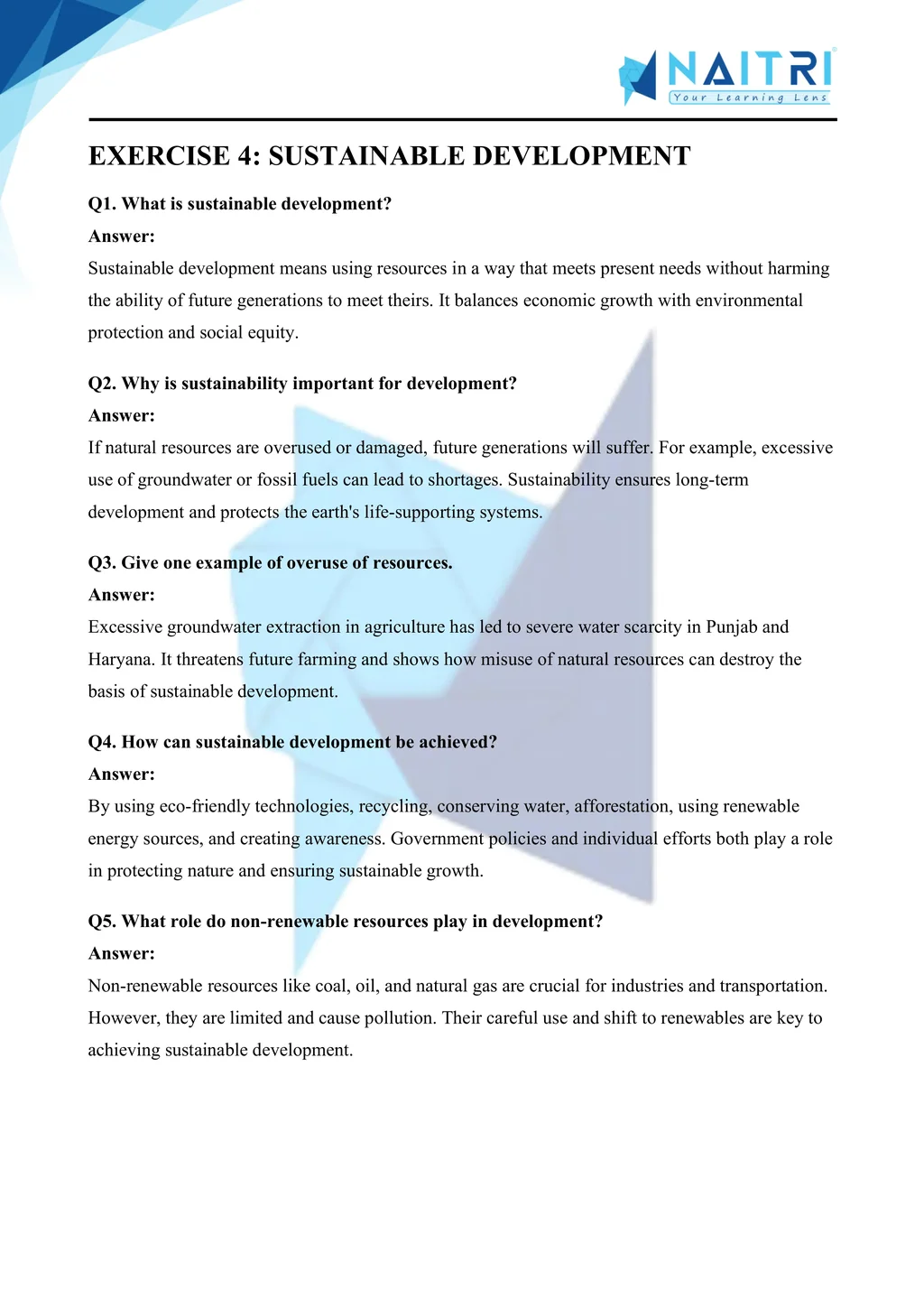
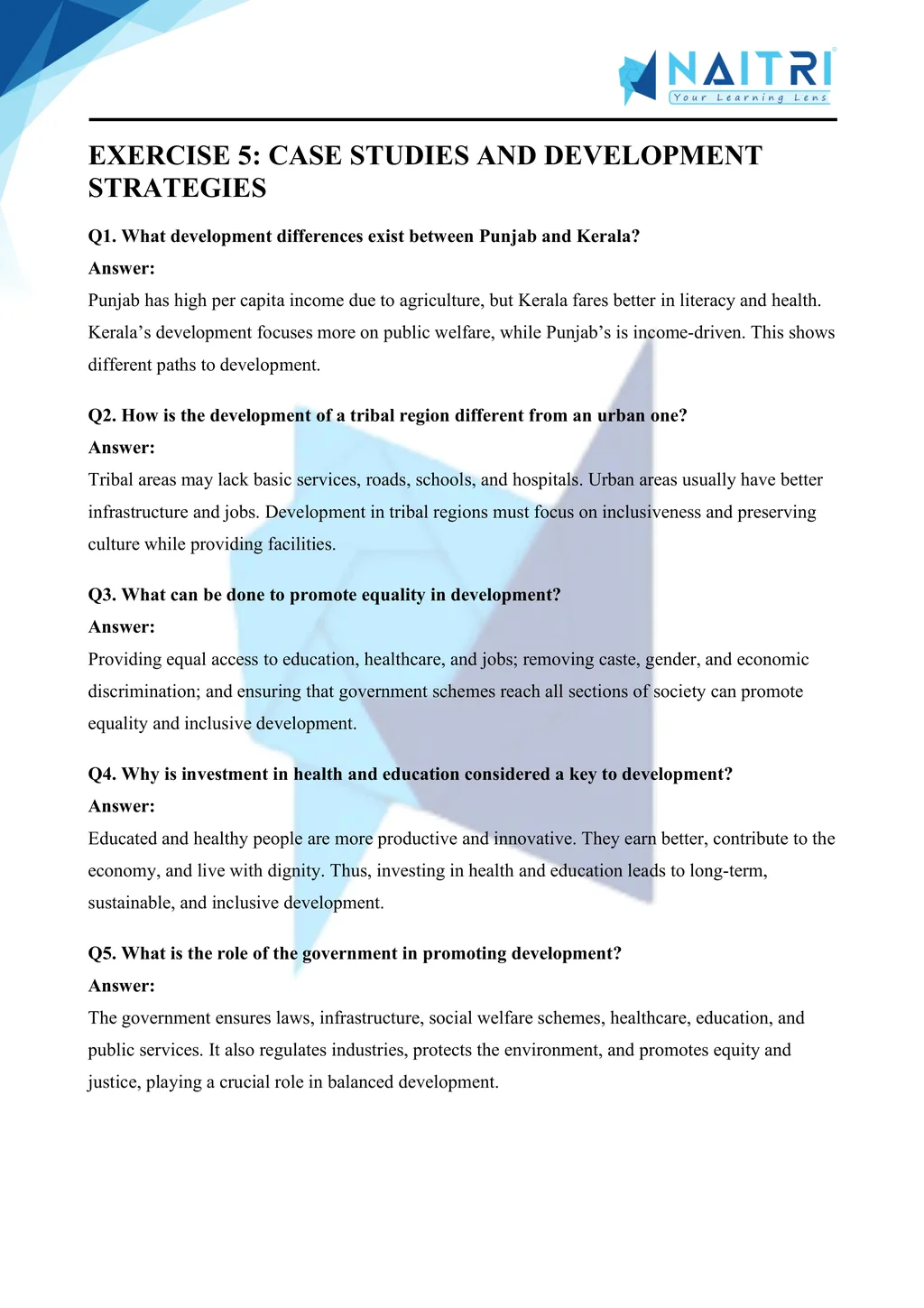
Experience Economics Like Never Before – With AR!
Understanding Development is now more exciting and immersive! With the NAITRI App, you can explore complex economics concepts through Augmented Reality (AR). See development goals differ, indicators compare, and real-world examples play out — right in front of you. Our AR-powered lessons make learning interactive, 3D, and fun, helping you retain concepts better and enjoy every topic.



Visualize . Interact . Understand . The future of learning is here
Development – Important Questions with Answers
What is development?
Answer: Development refers to the process that aims at improving living standards, income, health, and education, allowing people to lead a better quality of life.Mention any two goals of development.
Answer: People seek regular work and better income, and also want freedom, security, respect, equal treatment, and a healthy environment as development goals.Why do different people have different developmental goals?
Answer: People’s goals differ due to social status, needs, and aspirations. What may be beneficial for one may not be acceptable or useful for another.Give one example of conflicting developmental goals.
Answer: Building a dam may benefit industrialists and cities with power and water, but it may displace villagers, making it harmful for them.What is per capita income?
Answer: Per capita income is the average income per person in a country, calculated by dividing the total income by the total population.Why is per capita income not a perfect measure of development?
Answer: It does not consider income distribution, health, education, and other quality of life indicators, so it gives an incomplete picture of development.What is the World Bank’s criterion for classifying countries?
Answer: The World Bank classifies countries based on per capita income into low-income, middle-income, and high-income categories.What is HDI and who publishes it?
Answer: Human Development Index (HDI) is published by UNDP, ranking countries based on health, education, and income indicators.What are the components of HDI?
Answer: HDI includes three components: life expectancy, average years of schooling, and per capita income (adjusted for purchasing power parity).Why is sustainable development important?
Answer: Sustainable development ensures that we meet present needs without compromising the ability of future generations to meet their own resource needs.Give one example of a non-renewable resource.
Answer: Petroleum is a non-renewable resource because it takes millions of years to form and cannot be replenished once exhausted.What do you understand by renewable resources?
Answer: Renewable resources like solar energy and wind energy can be regenerated naturally and are available for continuous use if managed well.Why is groundwater overuse a serious issue?
Answer: Excessive use of groundwater for irrigation and drinking depletes underground reserves, affecting water security and causing ecological imbalance.What are common development goals for all?
Answer: Basic needs like education, healthcare, nutritious food, sanitation, clean environment, and peace are development goals shared by most people.How is literacy related to development?
Answer: Literacy improves employability, income levels, and awareness, making it a key indicator of development and human progress.Why is income alone not a sufficient indicator of development?
Answer: Without health, education, safety, and equality, mere income doesn’t ensure real development or happiness in people’s lives.What is the significance of public facilities in development?
Answer: Public facilities like transport, schools, hospitals, and water supply enhance people’s well-being and are essential for inclusive growth.What is inequality in income distribution?
Answer: It means income is concentrated in the hands of a few, while the rest may live in poverty, leading to social imbalance.What is purchasing power parity (PPP)?
Answer: PPP compares the buying capacity of different countries’ currencies by considering cost of goods and servicesin each nation.How do aspirations influence development?
Answer: People work and make choices based on their hopes and dreams, which motivate them to seek better opportunities and living conditions.What is the relation between democracy and development?
Answer: A democratic system promotes development by allowing freedom of expression, participation, and better policy decisions through people’s involvement.What is meant by national development?
Answer: It refers to the country’s overall progress in terms of economic growth, social justice, improved living standards, and equality.Name two sustainable development practices.
Answer: Using solar energy and practicing rainwater harvesting are sustainable practices that protect the environment and ensure long-term resource availability.What can lead to environmental degradation?
Answer: Industrial waste, deforestation, overuse of resources, and pollution caused by human activities result in serious environmental problems.Summarise the meaning of development.
Answer: Development is a multi-dimensional process that includes economic growth, social progress, equality, environmental sustainability, and improved human well-being.
Development explores what development means to different people, highlighting that goals can be conflicting—for example, industrial growth vs. environmental protection. It introduces indicators like income and life expectancy to compare development across countries. The concept of sustainable development is also discussed, emphasizing the importance of balancing growth with environmental care. This chapter encourages critical thinking about what truly makes a nation or person developed.
Download Naitri App
Easy, Visual Learning — Right on Your Phone
Learn with Augmented Reality! The Naitri app makes CBSE and MP Board concepts interactive and fun — even in low-resource settings. Watch lessons, complete homework, take tests, and track progress — all in one place. Anytime. Anywhere.
Available on








